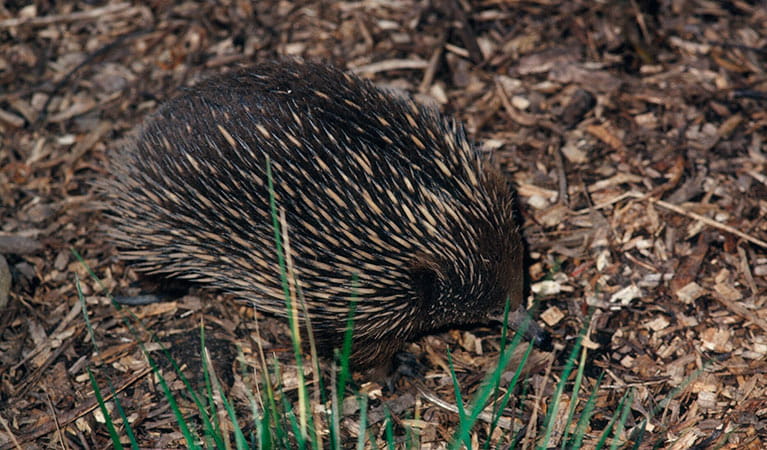Short-beaked echidna
One of only 2 egg-laying mammals in the world, the short-beaked echidna is one of the most widespread of Australian native animals. Covered in spines, or quills, they’re equipped with a keen sense of smell and a tube-like snout which they use to break apart termite mounds in search of ants.
Read more about Short-beaked echidna
Found throughout Australia and New Guinea, the short-beaked echidna, along with the platypus, are the only 2 egg-laying mammals (‘monotremes’) in the world. This stocky mammal has sharp spines, called quills, which cover its back and moult every year. The only other species of spiny anteater is the long-beaked echidna, found in the highlands of New Guinea.
With a distinctive tube-like snout and sticky tongue, the echidna is expert at breaking apart termite mounds in search of ants. Active from dawn to dusk, short-beaked echnidnas forage for food up to 18 hours a day. In winter, echidnas can become inactive and, at higher altitudes such as alpine zones, are known to hibernate for up to 28 weeks.
Animal facts
- Common name
- Short-beaked echidna
- Scientific name
- Tachyglossus aculeatus
- Conservation status in NSW
- Protected
Parks in which this animal is found
- Arakoon National Park
- Brindingabba National Park
- Coffs Coast Regional Park
- Glenrock State Conservation Area
- Guula Ngurra National Park
- Hat Head National Park
- High Plains area in Kosciuszko National Park
- Horton Falls National Park
- Jenolan Karst Conservation Reserve
- Kalyarr National Park
- Kanangra-Boyd National Park
- Katoomba area in Blue Mountains National Park
- Khancoban area in Kosciuszko National Park
- Killalea Regional Park
- Lane Cove National Park
- Langidoon-Metford State Conservation Area
- Lower Snowy River area in Kosciuszko National Park
- Monga National Park
- Mount Jerusalem National Park
- Murray Valley Regional Park
- Narriearra Caryapundy Swamp National Park
- Southern Blue Mountains area in Blue Mountains National Park
- Thredbo-Perisher area in Kosciuszko National Park
- Tumut area in Kosciuszko National Park

